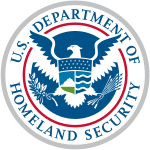 | |
| Agency overview | |
|---|---|
| Formed | 2003 |
| Jurisdiction | United States |
| Headquarters | Saint Elizabeth's Campus, Washington D.C. |
| Employees | 491 (2012) |
| Annual budget | $0.8 billion (2012) |
| Agency executive |
|
| Parent agency | Department of Homeland Security |
| Website | www |
The Science and Technology Directorate (S&T) is a component within the United States Department of Homeland Security. DHS-S&T serves as the research and development arm of the Department as it fulfills its national security mission.
Contents
The Science and Technology Directorate is led by the Under Secretary of Homeland Security for Science and Technology, who is appointed by the President of the United States with confirmation by the United States Senate.
